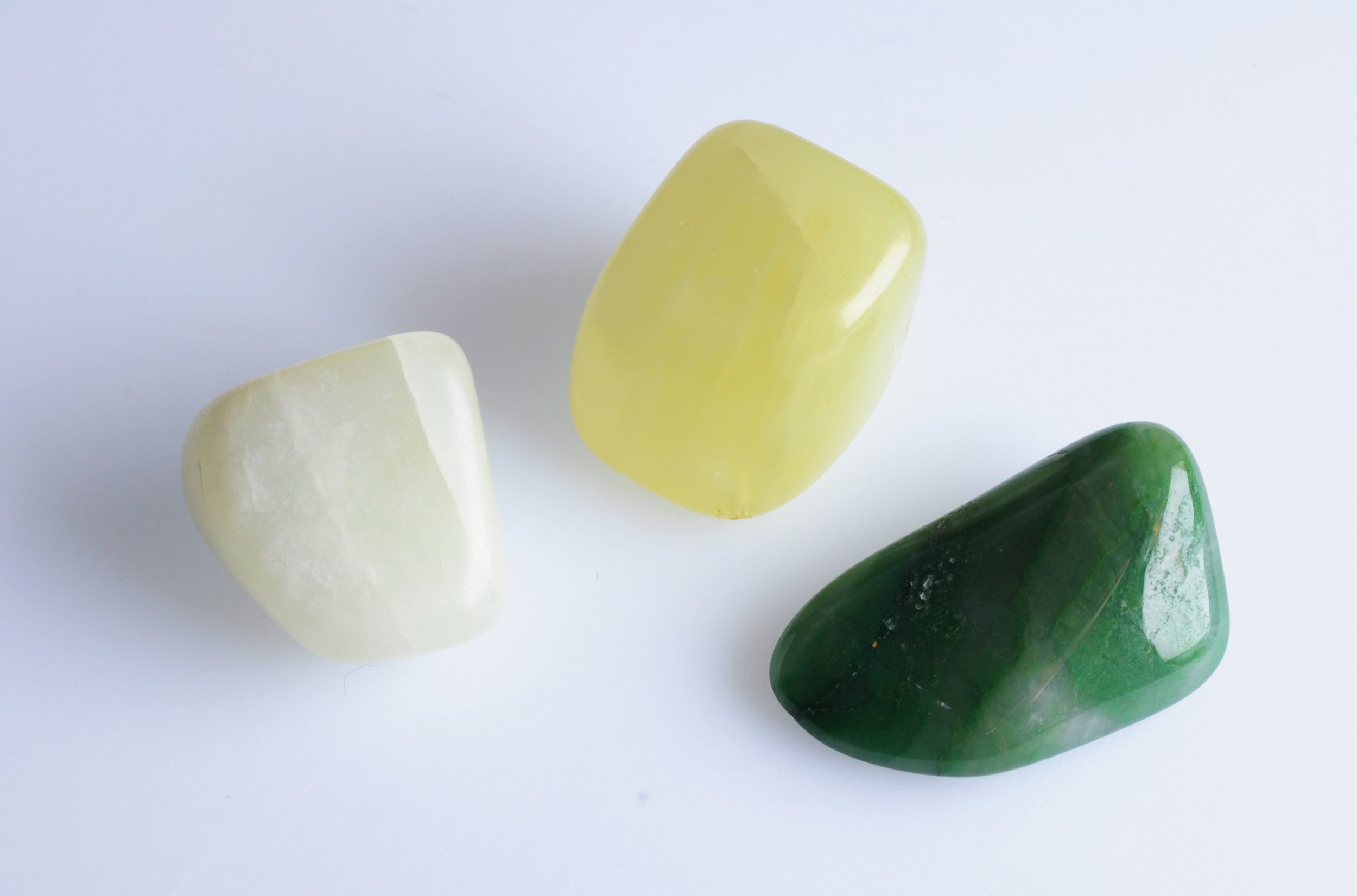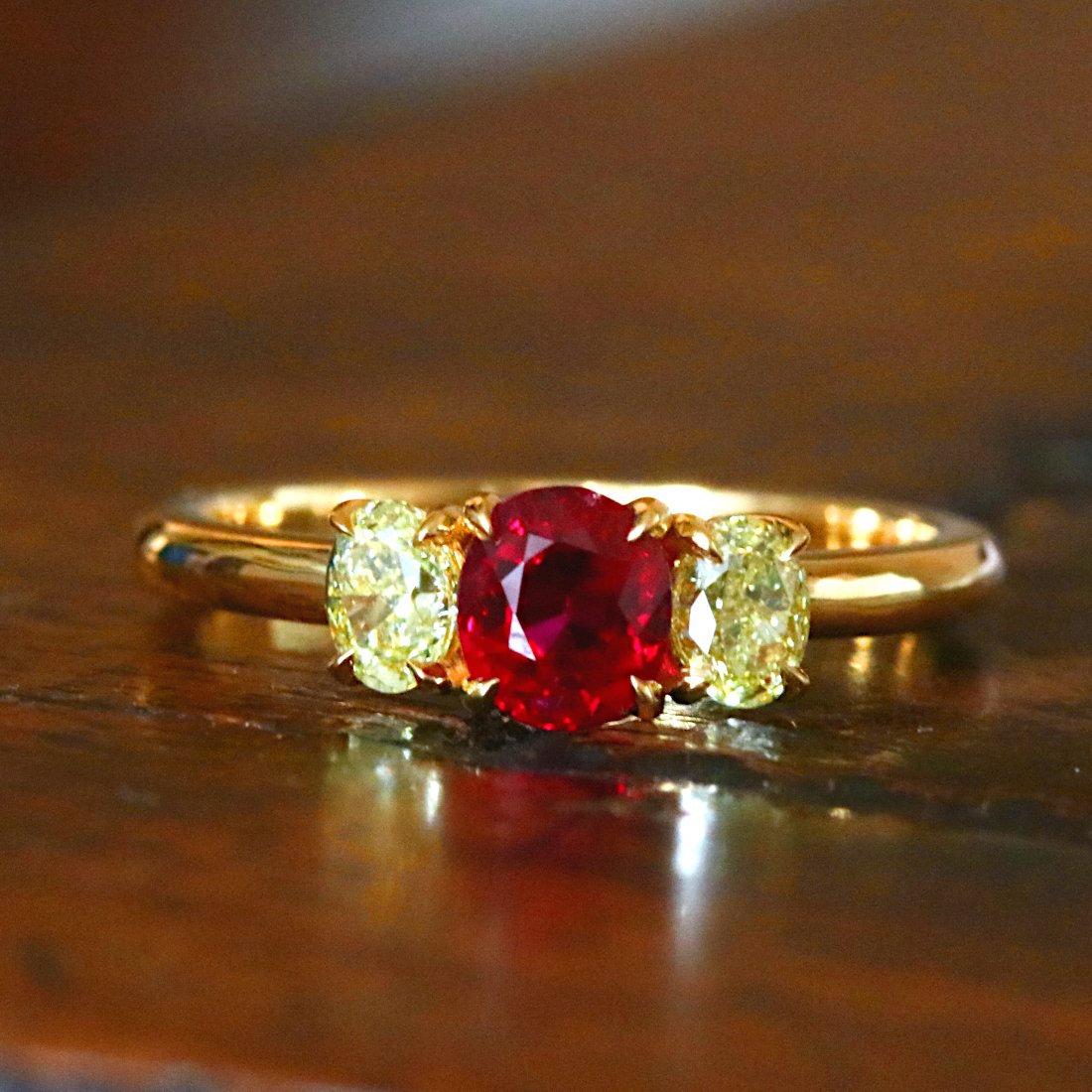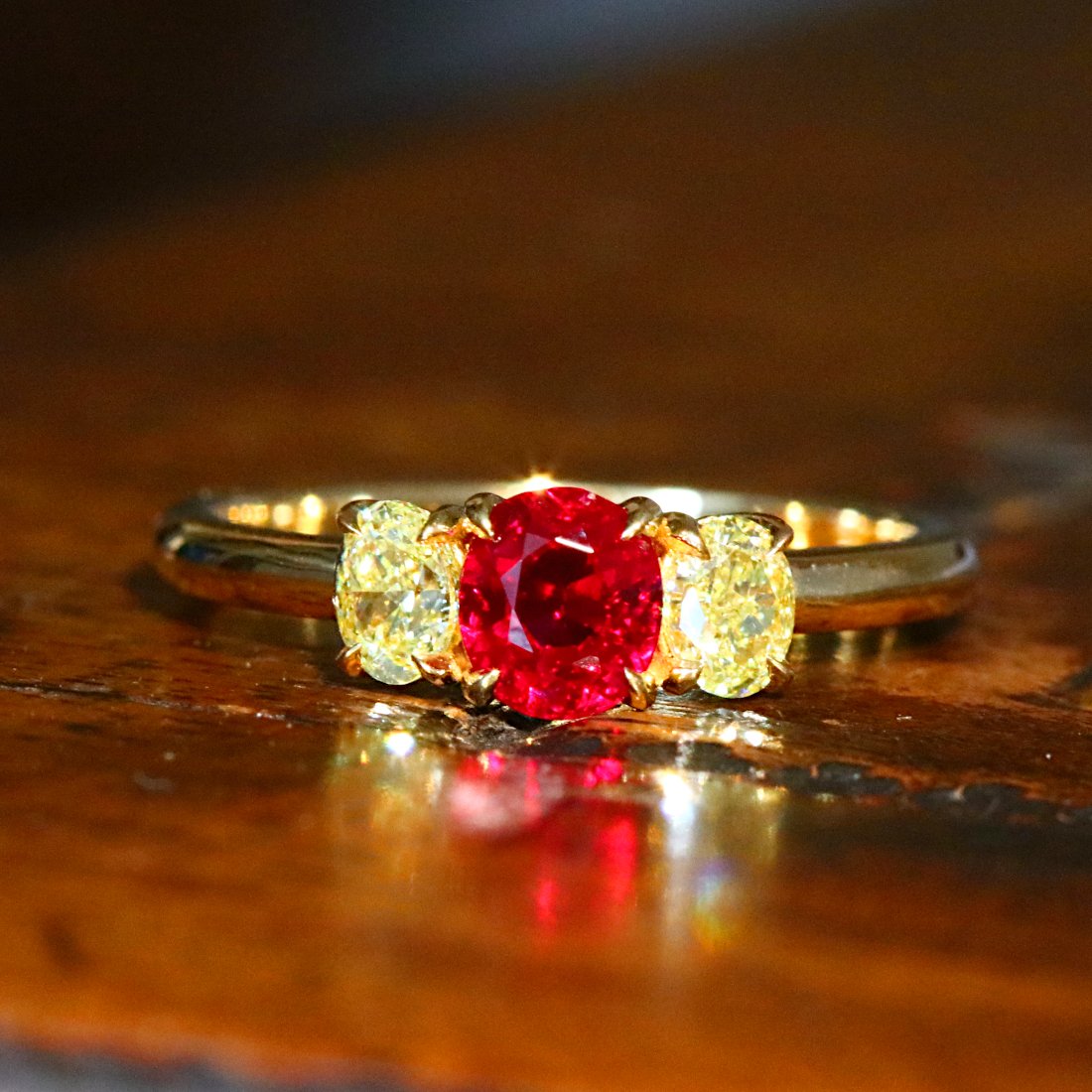Gems of Burma
Myanmar (formerly Burma, a name still much used by foreigners and the local population alike…) has a long and rich history of gemstone mining. Burma was once the world’s largest producer of rubies, and although production has declined in recent years, the country is still home to some of the finest rubies and sapphires in the world.
An exceptionally fine 11 ct Burma sapphire. Previously sold by Enhoerning. This is the blue sapphire color that has formed Burma’s reputation as the top source for naturally-colored (untreated) blue sapphire, right behind Kashmir.
History
Gemstone mining in what today is known as Burma/Myanmar is thought to have begun as early as the 7th century. The famed Mogok gem tract, a meandering network of mines in a mountainous area around the village of Mogok (assumed to be founded in 1217), has most probably been operating since the 16th century. During those times, Mogok became known as the “City of Rubies”. In the late 19th century, British colonialists began to heavily exploit Burma’s gemstone resources, and the country became the world’s largest producer of rubies and sapphires. Today, exports of gems are still believed to account for up to half of the country’s GDP, but total quantities of gems exported are much lower than in past centuries, also due to decreasing output of high quality gems from the mines.
Mogok ‘City’, in the Mandalay Region of central Myanmar, is believed to have been founded in 1217. The surrounding area has supplied the world with gemstones of the highest quality for centuries. Courtesy: JimmyWinMGK, Creative Commons.
What kind of gemstones are mined in Burma/Myanmar?
Remarkably, there are not many gems that do not naturally occur in Burma – although mostly known for rubies and sapphires, the gem pits especially of the Mogok region have produced an incredibly wealth of different gem species, including but not limited to garnets of various colors, various colors of beryl including aquamarine; peridot, chrysoberyl, many colors of quartz, tourmaline, moonstone, and spinel. Among the spinels, the deep-red to neon-pink varieties have risen to great fame in recent years. Burma is the world’s most important exporter of gem-grade jadeite, and it used to be an important producer of cultured South Sea pearls. The only classic gemstone that is almost never found in Burma is emerald – beryl that is colored to a deep green color by chromium or vanadium (lighter green beryls do occur). Despite the great diversity of gems mined in Myanmar, ruby and sapphire, perhaps along with jadeite, have always been the commercially most relevant products of the mining industry.
In Burma/Myanmar, gem quality jadeite is found in various colors. Courtesy: Simon A. Eugster, Creative Commons.
Why are rubies from Burma considered the finest in the world?
It is a misconception to assume that no ruby from any other origin can be as red, lively, vibrant and beautiful as one from Burma. Exceptionally fine rubies can be found in many countries, including but not limited to Afghanistan, Ceylon/Sri Lanka, Kenya, Madagascar, Malawi, Mozambique, Tajikistan, Tanzania, and Vietnam. Nevertheless, Burmese rubies have set a reference standard for the perfect ruby red, and most people, even without any prior knowledge of the jewelry trade, would identify a classic ‘pigeon’s blood red’ ruby from Burma (and especially from the Mogok mining region…) as the epitome of a fine, gem-grade ruby.
A very fine pair of pear shaped ‘pigeon’s blood’ rubies from Burma, unheated/untreated, previously sold by Enhoerning.
The distinctive appearance of Burmese rubies is mostly caused by two factors: first, they are primarily colored by the trace element chromium, while rubies from other regions (most African sources and those from Thailand) are colored by iron. Second, the presence of chromium in high concentrations, in the absence of high iron content, makes Burma rubies fluoresce in daylight or sunlight with an ultraviolet component. But how does that matter?
The thing about fluorescence
When chromium-rich rubies are exposed to ultraviolet light, such as contained in natural daylight or sunlight, they will typically respond with strong fluorescence of pink to red color.
An unheated/untreated Burma ruby, previously sold by Enhoerning, responding with strong pink fluorescence to longwave ultraviolet light.
This fluorescent effect, in addition to the red body color of the gemstone, can dramatically increase the perceived level of saturation (‘vividness’), while having a brightening effect, often romantically referred to as “glow”. This effect is highly desirable, and all rubies from Burma – be it from the old mines of Mogok or the more recently discovered ruby deposits of Mong Hsu – will show strong to very strong fluorescence.
That does not mean that rubies from other sources do not show fluorescence. Virtually all rubies do, to some degree. Strong fluorescence can, against all prejudice, even be found in some rubies from Mozambique. But if very strong fluorescence is desired, nothing outrivals a ruby from Burma/Myanmar.
An unheated/untreated Burma ruby, previously sold by Enhoerning, showing the result of fluorescence when exposed to natural sunlight. Please note: in natural sunlight, you will usually not see the fluorescence itself (for that you have to use ultraviolet light in a darkened room). What is eye-visible is the famous ‘glow’ caused by the fluorescence.
What makes blue sapphires from Burma special?
At first glance, blue sapphires from Burma can resemble fine specimens from other sources, including but not limited to Ceylon/Sri Lanka, Kashmir, and Madagascar. Blue sapphires from all those sources have been formed in metamorphic host rock, so they share common characteristics from a geological point of view. What sets the Burmese ones apart is their overall quality! Most blue sapphire found in Ceylon/Sri Lanka has to be heat-treated in order to develop a strongly saturated, evenly distributed blue color. Blue sapphires from Burma usually have a fully developed, all-natural color right out of the mine. It is rare to even encounter a heat-treated Burma sapphire. This is the main reason why Enhoerning always stocks fine sapphires specifically from Burma. Some of our most successful ‘custom sourced’ gemstones have been of Burmese origin – these special stones simply make happy customers!
Ethical considerations – are our Burmese gems ‘conflict free’?
With a checkered recent history of military coups, dictatorship, struggle for democracy, civil war, reports of serious human rights violations, and on/off sanctions imposed by Western governments, trading gemstones originating in Burma/Myanmar is not entirely unproblematic. Other than in the 1990s to early 2000s, when American sanctions de-facto prohibited any import of Burmese gems into the United States, current sanctions, in place since March 2021, are strictly targeted at the military leaders ruling the country. This means that gemstones from Burma/Myanmar can still be imported into the United States, as long as the buyer/importer can effectively prove that no sanctioned entities or individuals are benefiting from the transaction anywhere along the supply chain. At first glance this may sound reasonable, but in practical terms and for the foreign buyer, it is nearly impossible! As a consequence, Enhoerning Jewelry only deals in gemstones from Burma/Myanmar that were exported prior to February 2021 at the very latest (the date of the most recent military coup overthrowing the democratically elected civilian government). All our Burmese gems are vintage or antique stones that are either offered in their original vintage/antique mountings, or that have been reclaimed from old jewelry pieces and recut/repolished prior to being offered for sale by us. On the positive side it should be noted that most antique gemstones from Burma greatly exceed the newly mined material in quality. Purchasing antique or ‘reclaimed’ gemstones of Burmese origin is not only a safe choice with regard to ethical considerations, but it will – more often than not – allow you to acquire the finer quality gem.











